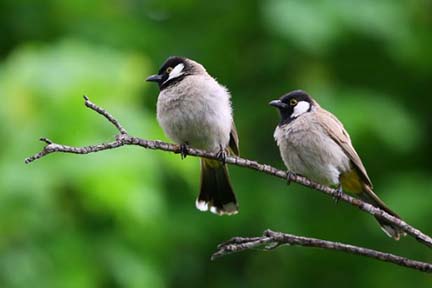 July 7, 2021 July 7, 2021
Contact: Press@Michigan.gov (Governor’s Office) or Holly Vaughn (DNR Wildlife), 248-881-9429
July is Wildlife Conservation Month
It is hard to imagine a Michigan without white-tailed deer, elk, bald eagles or wild turkey. But if not for the efforts of conservationists, volunteers and partner agencies, these species might be absent from Michigan’s beautiful landscape. In the spirit of these conservation successes, Gov. Gretchen Whitmer has proclaimed July as Wildlife Conservation Month to recognize the work Michiganders have done for conservation – and draw attention to the work that still needs to be done.
“In Michigan, we are proud of our wildlife, waterways, and public lands and want to ensure that they are protected for future generations to enjoy,” said Whitmer. “This Wildlife Conservation Month, we celebrate our long legacy of conservation and recommit ourselves to bringing vital species back from the brink and protecting our state’s natural diversity.”
Abundant wildlife viewing and hunting opportunities would not be possible without the state’s roughly 4.6 million acres of public lands. The Michigan Department of Natural Resources manages these lands to enhance habitat, monitor wildlife populations, prevent the spread of disease and ensure wildlife flourishes.
Sometimes the path to a flourishing species takes a while. Moose, a majestic animal central to Michigan’s cultural identity, were nearly extirpated – or, locally extinct – in Michigan by the late 1800s. Due to conservation efforts from the 1980s-1990s, moose can now be found in two places in the Upper Peninsula. More recently, the Kirtland’s warbler was removed from the U.S. Fish & Wildlife Service’s endangered species list in 2019 thanks to decades of conservation partnership.
Michigan’s wildlife conservation community has a long history and has grown to address the state’s evolving challenges. Hunting and fishing licenses provide tens of millions of dollars each year to support conservation of species like deer, bear, elk, turkey, duck and moose. Hunters and anglers contribute $11.2 billion each year to Michigan’s economy and create 171,000 jobs, making this aspect of outdoor recreation among the state’s top 10 job-creating industries; support from hunters and anglers has been vital to conservation work since the inception of the Department of Conservation, the precursor to the DNR.
More people are becoming aware of the importance of wildlife management and getting involved in new activities to support that goal. Whether you are one of Michigan’s 3.2 million wildlife watchers enjoying feeding backyard birds, watching spring migration at your favorite birding spot, or heading out to hear elk bugling in the fall, you have experienced the results of these efforts.
“We take pride in being a part of the conservation community, but recognize there is still much more to do,” said DNR Director Dan Eichinger. “We’re working with partners to bring the Arctic grayling back to Michigan and making science-based management and conservation decisions to ensure Michigan’s wildlife remains balanced and thriving for generations to come. Thanks to strong partnership between government and nongovernmental organizations, there is an abundance of wildlife to hunt in Michigan, from white-tailed deer to ruffed grouse to elk and bear.”
See conservation efforts in action
Head north to Mio for a Kirtland’s warbler tour to learn more about this unique songbird brought back from the brink of extinction; visit the Kellogg Bird Sanctuary near Battle Creek to see trumpeter swans at the facility that partnered with the DNR to bring the species back to Michigan; or take a day this fall to hunt at one of Michigan’s Wetland Wonders, where world-class waterfowl hunting awaits.
Visit one of the 100-plus state wildlife and game areas in Michigan for a hike away from the hustle and bustle of the city or a day of hunting, or check out 100 ways to celebrate the DNR’s 100-year anniversary and be part of Michigan’s wildlife conservation story.
Enjoy this video with images of some of Michigan’s threatened and endangered plant and animal species and visit Michigan.gov/Wildlife or Michigan.gov/Hunting to learn more and participate in wildlife conservation in Michigan.
Note to editors: Accompanying photos are available below for download. Caption information follows.
- Moose: A cow moose (mature female moose) rests in the snowy Michigan forest.
- Kirtland’s warbler: The colorful songbird in its natural habitat, jack pine forest.
- White-tailed deer: Michigan’s deer population remains a draw for hunters and wildlife watchers.
- Arctic grayling: The first year class of Arctic grayling that arrived at the Marquette State Fish Hatchery in September 2020, part of the effort to restore the native fish species.
- Bird-watching: People of all ages enjoy catching sight of the many beautiful bird species found in Michigan.
- Turkeys: Wild turkeys are one of the most widely distributed game birds in Michigan; they can be found in every county of the Lower Peninsula, plus several Upper Peninsula areas.
|



 July 7, 2021
July 7, 2021